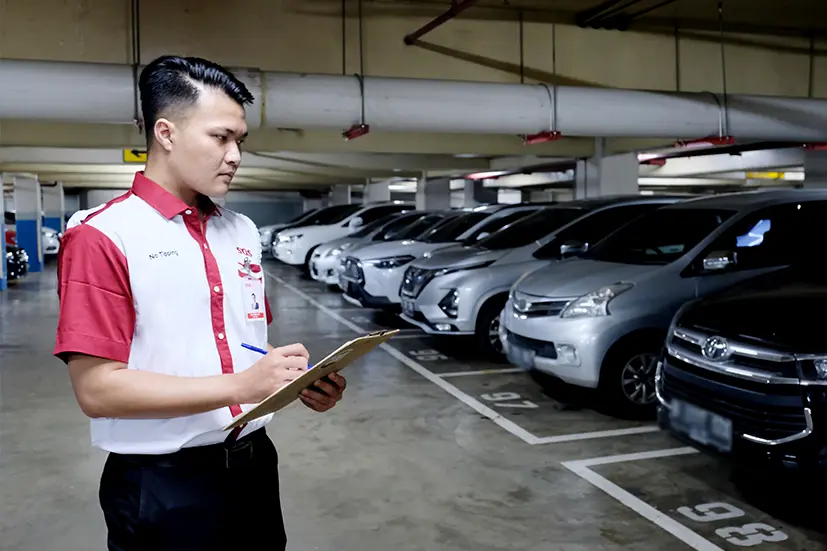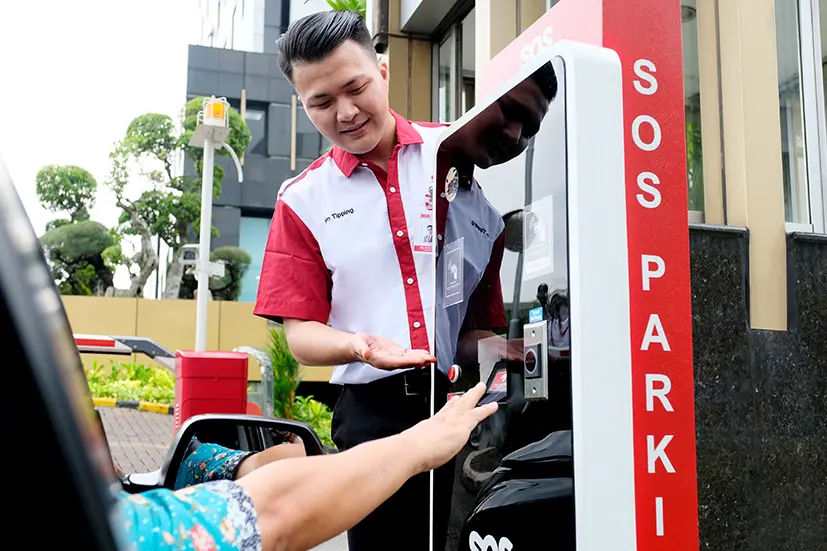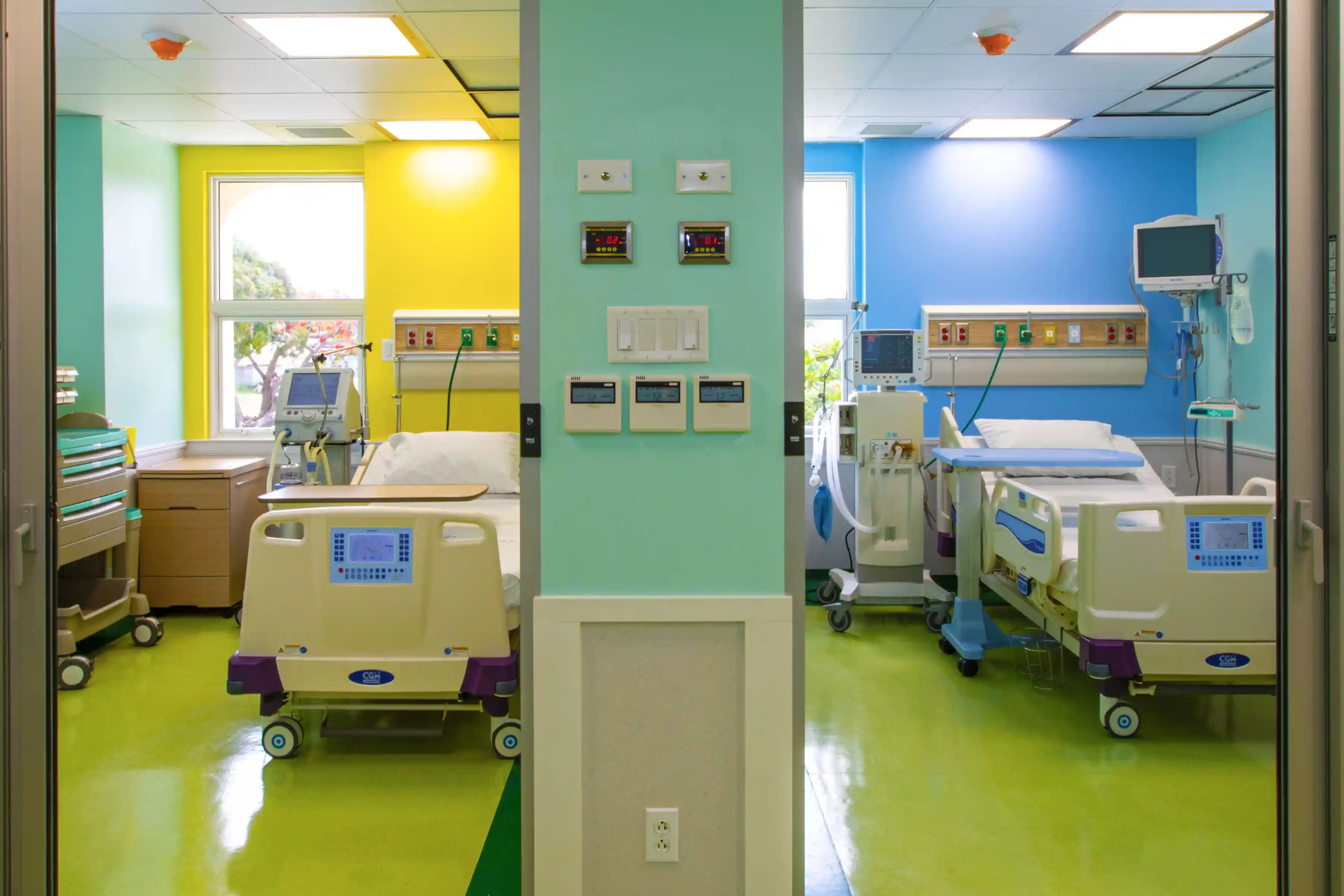Hospital Parking SOP Guide for Efficient Operations
30 October 2025

Implementing a hospital parking SOP is crucial to ensure orderly, safe, and efficient vehicle flow within hospital areas. With clear procedures, parking management becomes more coordinated and convenient for both staff and visitors.
To understand how this system works and who can help implement it professionally, let’s explore the explanation below.
Hospital Parking SOP Standards According to the Ministry of Health
The Indonesian Ministry of Health, through the Ministerial Decree HK.01 of 2022 on Hospital Accreditation Standards, outlines several standards related to hospital parking management as follows:
1. Hospital Accreditation Standards
The Ministry groups accreditation standards under Facility and Safety Management, which includes parking facility management.
2. Technical Guidelines for Class C Hospitals
These guidelines provide technical directions on hospital facilities, including the ideal parking area ratio of 1.5 parking units per hospital bed.
3. Inpatient Vehicle Parking SOP
Some hospitals have developed specific SOPs for inpatient vehicle parking. These include vehicle registration procedures and free parking facilities for inpatients.
Key Components in Hospital Parking Management
An effective hospital parking SOP ensures organized, safe, and efficient vehicle movement within healthcare facilities. Each component works together to streamline management for both public and private hospitals.
Here are the detailed components:
1. Vehicle Entry and Exit Flow
Designating separate lanes for patients, staff, and visitors helps reduce congestion and improve efficiency.
Clear directions also help parking attendants manage vehicle movement smoothly, especially during peak hours or emergencies.
2. Parking Lot Layout
The layout should be divided into specific zones such as ambulance areas, medical staff parking, and visitor parking.
Proper zoning increases space efficiency and ensures easy access for emergency vehicles.
3. Parking Attendant Responsibilities
Parking attendants are responsible for directing, managing, and securing vehicles.
They also ensure that all users follow the SOP, apply parking fees correctly (if applicable), and resolve any operational issues that arise.
4. Recording System
The use of parking tickets or digital systems allows accurate vehicle identification. This system helps hospital management monitor vehicle flow, manage fees, and meet facility standards required by regulations.
Read Also: 9 Ways to Organize Office Parking Spaces for More Efficiency
Practical Guide and Procedures for Effective Hospital Parking Management
Efficient hospital parking management is vital to maintain a safe and comfortable environment for patients and visitors. Through structured procedures, parking space can be optimized, and hospital operations can run smoothly.
Here are the main guidelines and procedures.
1. Operational Steps for Parking Attendants
Parking attendants play a key role in maintaining smooth traffic flow within hospital areas. With structured procedures, every process—from vehicle entry to exit—runs safely and efficiently. Here are the detailed operational steps for parking attendants:
a. Welcoming Incoming Vehicles
-
Greet visitors or patients and provide parking directions.
-
Check vehicle condition when necessary, especially for priority vehicles such as ambulances.
b. Ticket or Digital Registration
-
Issue parking tickets or process digital registration.
-
Record vehicle entry time accurately for monitoring and billing purposes.
c. Directing Vehicles to Designated Areas
-
Guide vehicles to appropriate zones: patient, visitor, or staff areas.
-
Clearly mark special areas for priority or emergency vehicles.
d. Supervising Parked Vehicles
-
Ensure vehicles are parked properly and safely.
-
Keep driveways clear for smooth traffic flow.
e. Vehicle Exit Preparation
-
Verify tickets or digital records before vehicles leave.
-
Direct vehicles through the proper exit route to prevent congestion.
f. Parking Fee Application and Payment
-
Process payments manually or digitally according to hospital policy.
-
Provide receipts and ensure accurate transaction record.
g. Daily Reporting and Evaluation
-
Record all parking activities, including priority vehicles and incidents.
-
Submit reports to hospital management for evaluation and improvement.
2. Emergency Situation Procedures
Emergency handling is one of the most critical aspects of hospital parking management. Attendants must act quickly to ensure the safety of patients, staff, and visitors:
a. Identifying Emergencies
-
Recognize priority vehicles such as ambulances or medical staff transport.
-
Observe situations that could block emergency access.
b. Opening Priority Lanes
-
Immediately clear and open lanes for emergency vehicles.
-
Ensure no vehicles obstruct emergency routes.
c. Coordination with Medical and Security Teams
-
Communicate with medical units about the arrival of emergency vehicles.
-
Work with security teams to maintain order and area safety.
d. Redirecting Other Vehicles
-
Direct non-emergency vehicles to alternative parking areas or hold their entry temporarily.
-
Maintain orderly traffic flow to prevent further congestion.
e. Monitoring During Emergencies
-
Ensure ambulances or priority vehicles can move freely from entry points to destinations.
-
Monitor surrounding conditions to minimize risk to patients and visitors.
f. Documentation and Evaluation
-
Record all emergency events for reporting and evaluation purposes.
Read Also: 5 Ways to Improve Parking Lot Efficiency with Outsourcing
Common Challenges in Hospital Parking Management
Managing hospital parking is not without difficulties. Several challenges often affect the efficiency, safety, and comfort of patients and visitors. Here are some of the most common issues:
1. Limited Parking Space
Limited parking areas are a frequent challenge, especially during peak hours. This can lead to congestion, difficulty finding parking spots, and disruption of access for ambulances or other priority vehicles.
2. High Vehicle Traffic Density
The simultaneous arrival of patients, visitors, and staff often causes congestion in hospital parking areas. Without proper traffic flow management and clear SOPs, the vehicle movement becomes disorganized and can lead to accidents or operational delays.
3. Lack of Trained Parking Staff
Insufficiently trained parking attendants may struggle to organize vehicles, handle emergency situations, or apply parking fees correctly. This can reduce operational efficiency and lower the quality of parking services.
4. Visitor Noncompliance
Not all visitors follow parking rules—some park irresponsibly or skip using tickets or automated machines. This creates additional challenges for parking management teams trying to maintain order and efficiency in the parking area.
5. Security and Vehicle Damage Risks
Risks of vehicle theft, damage, or collisions are ongoing concerns. Without proper supervision and accurate vehicle tracking systems, the potential for loss or disputes between visitors and the hospital can increase significantly.
Solutions to Overcome Hospital Parking Challenges
Hospital parking management faces a variety of challenges—from limited space to visitor compliance. SOS provides professional parking management services to help hospitals address these issues effectively and maintain smooth, secure, and efficient operations.
Here are several solutions offered by SOS:
1. Optimizing Parking Space
Through proper zoning and planning, SOS parking services can efficiently organize parking areas for patients, visitors, and medical staff. The use of digital systems or automated parking machines helps maximize available capacity while maintaining order and accessibility.
2. Structured Vehicle Flow Management
SOS’s professional attendants ensure smooth and organized vehicle movement, including dedicated lanes for ambulances and other priority vehicles. This structured system helps reduce congestion and enhances the overall efficiency of hospital parking operations.
3. Parking Attendant Training
SOS provides regular training programs for parking attendants to ensure they understand SOPs, emergency procedures, and how to operate automated parking systems. This improves staff competence and ensures high-quality, consistent parking services.
4. Implementation of Modern Parking Systems
SOS integrates advanced digital parking systems, including automated parking machines and electronic ticketing solutions.
These systems simplify vehicle tracking, parking fee management, and real-time monitoring—supporting hospital compliance with professional service standards.
5. Regular Supervision and Evaluation
SOS offers routine monitoring and performance evaluations of parking areas. With this continuous supervision, any operational issues or obstacles can be quickly identified and resolved, ensuring vehicle safety and visitor comfort at all times.
Read Also: 4 Ways an Automatic Parking System Works
Transform Hospital Parking Systems with SOS Professional Parking Management
SOS professional parking services help hospitals maintain smooth vehicle traffic, patient safety, and visitor convenience. With automated parking machines and digital systems, all parking activities are recorded transparently and efficiently.
Leverage SOS’s expertise as a trusted Jakarta outsourcing provider to optimize your hospital’s parking management.
Contact us today for a free consultation and professional parking solutions.



